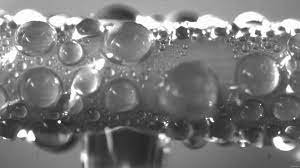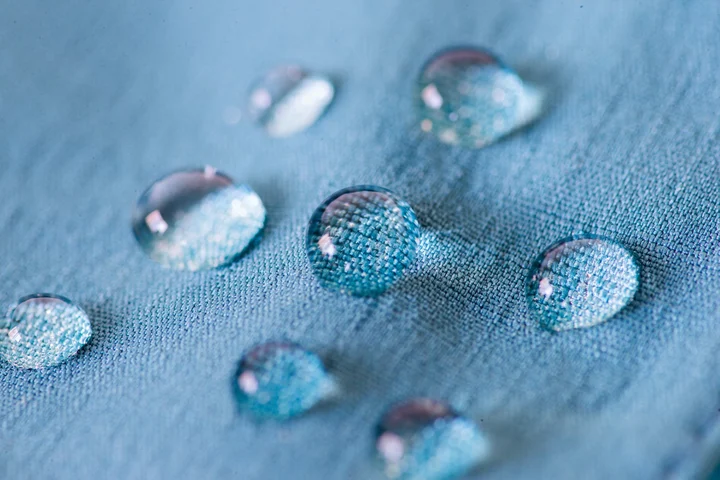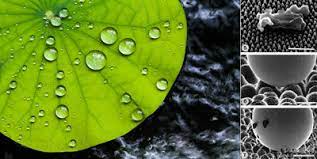Harnessing Hydrophobicity: The Science Behind Hydrophobic Surfaces
- Protap Sarker
- Feb 6, 2024
- 3 min read
Introduction: In the realm of materials science, hydrophobic surfaces have sparked significant interest due to their remarkable ability to repel water. From self-cleaning windows to waterproof textiles, the applications of hydrophobic coatings are diverse and continue to expand. But what exactly makes a surface hydrophobic, and how do researchers harness this property for various practical purposes? Let's delve into the science behind hydrophobic surfaces and explore their fascinating characteristics.
Understanding Hydrophobicity: The term "hydrophobic" originates from the Greek words hydro, meaning water, and phobos, meaning fear. In essence, hydrophobic surfaces exhibit a strong aversion to water, causing droplets to bead up and roll off rather than spreading out. This behavior is due to the surface's inherent energy barrier against water molecules, preventing them from effectively wetting the surface.
Key Factors Influencing Hydrophobicity:
Surface Chemistry: The chemical composition of a surface plays a crucial role in determining its hydrophobicity. Surfaces with low surface energy, typically composed of nonpolar molecules, tend to repel water. Fluoropolymers, for instance, are renowned for their hydrophobic properties due to the presence of fluorine atoms, which contribute to their low surface energy.
Surface Roughness: Texture also plays a significant role in enhancing hydrophobicity. Microscopic or nanoscopic structures on the surface create air pockets that trap water, preventing it from making close contact with the surface. This phenomenon, known as the lotus effect, is exemplified by the leaves of the lotus plant, which possess a highly hydrophobic surface due to their intricate nanostructures.
Surface Coatings: Hydrophobic coatings can be applied to surfaces to modify their properties. These coatings often contain compounds such as silicone or fluoropolymers that lower surface energy and increase water repellency. Advanced techniques like chemical vapor deposition and plasma-enhanced chemical vapor deposition allow for precise control over coating thickness and composition, enabling the creation of highly durable hydrophobic surfaces.
Applications of Hydrophobic Surfaces:
Self-Cleaning Materials: Hydrophobic surfaces are inherently self-cleaning, as water droplets carrying dirt or debris can easily roll off, carrying contaminants away with them. This property finds applications in self-cleaning windows, building facades, and automotive coatings, reducing the need for frequent cleaning and maintenance.
Anti-Corrosion Coatings: Hydrophobic coatings can protect metal surfaces from corrosion by repelling moisture and preventing the formation of rust-inducing water films. This application is particularly valuable in marine environments, where metal structures are exposed to saltwater and high humidity.
Water-Resistant Textiles: Fabrics treated with hydrophobic coatings exhibit excellent water repellency, making them ideal for outdoor apparel, tents, and sportswear. These textiles maintain their breathability while effectively repelling rain and moisture, keeping the wearer dry and comfortable in various weather conditions.
Future Directions: Research in the field of hydrophobic surfaces continues to advance, with ongoing efforts focused on developing eco-friendly and sustainable coatings, as well as exploring novel applications in fields such as biomedicine and microfluidics. By gaining deeper insights into the underlying mechanisms of hydrophobicity and harnessing them effectively, scientists and engineers are poised to unlock even greater possibilities in the realm of surface engineering.
Conclusion: Hydrophobic surfaces represent a fascinating intersection of chemistry, physics, and materials science, offering a myriad of practical applications across diverse industries. By understanding the fundamental principles governing hydrophobicity and leveraging innovative techniques, researchers are paving the way for the development of advanced materials with enhanced performance and functionality. As we continue to unravel the mysteries of hydrophobic surfaces, the prospects for transformative technological advancements are indeed promising.



Comments